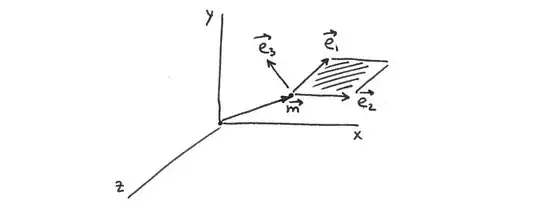I am trying to estimate a midplane of a 3D model using the midpoints of paired landmarks, in order to reconstruct missing data (midplane refers here to the middle/saggital plane of the cranium which cuts the skull into two symmetrical halves, left and right).
I therefore need to estimate a plane from 27 points in 3D. I need to get the equation of the plane as $$ax+by+cz=d.$$
I have looked into orthogonal regression and principal component analysis (PCA) as methods, however I didn't take maths past A-levels and am struggling. I know I can supposedly use the eigenvectors to get the equation of the plane of best fit, but need someone to explain exactly how. I am using R for the PCA but am not great at R either.
Alternatively, if there's a better way to estimate the plane I would be glad to hear it!
